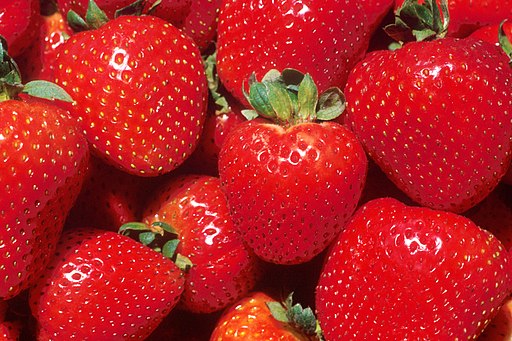Grow Berries!
Blueberries
Blueberries come in a variety of sizes and shapes. You will want to pick plants that fit your landscape (and appetite). They range from groundcover (24" tall) to hedge type (72” tall). Be sure to give them plenty of room to reach their mature size. Think about using the hedge varieties to form an edible screen or hedge in your yard.
There are different fruiting seasons - early, mid, and late - for blueberries. Think about planting one or more of each type for a full season of berries. Also, because the Rabbiteye variety requires cross pollination for maximum fruit set, be sure to plant 3 or more cultivars.
Since blueberries are naturally bog or swamp plants, it is important to plant them with organic soil amendments that will help to retain moisture. Adding peat moss to the amending mix helps retain water.
Blueberries prefer full sun but will tolerate light shade. If you will be planting them as a hedge or screen, space plants 4’ on centers. Be sure to water plants during dry spells.
Blueberries are cold-hardy to about -25°, so no winter protection is required. Fertilize at the beginning of the growing season with an acidic fertilizer like HollyTone.
Blackberries & Raspberries
Blackberries and Raspberries are in the bramble (rose) family. Native to North America, they are very easy to grow if you follow a few simple rules.
Choose a site where you have never grown Potatoes, Tomatoes, or Eggplant. These plants may host verticillium wilt, which can live in the soil for years.
Blackberries & Raspberries prefer full sun but will perform pretty well in a half day of shade. Once a site is chosen, combine compost, topsoil, and existing soil into a 24” wide by 24" deep location.
Plant your blackberries so that when the soil settles, the plant will be at the original ground level. Water thoroughly after planting. Fertilize plants at the beginning of the growing season with a natural formula such as Espoma PlantTone. Do not overfeed, as this will lead to lots of vegetative growth at the expense of fruit production.
Blackberries & Raspberries are cold-tolerant to -25° and need no winter protection. After a cane has fruited, prune it back as far as possible and discard. This minimizes disease. The following spring, cut back the remaining canes to a convenient height and thin to 3-4 canes per square foot. When thinning, leave the strongest, healthiest canes.
Strawberries
Strawberries are very easy to grow. There are two main types: “May bearers” or “June bearers”, and “Everbearers”. May/June bearers provide you with one big crop in May or June. Everbearers provide a large crop in May, then a continuous light crop up until the first frost. Note that May/June bearers perform better in North Carolina than everbearers.
Strawberries need full sun most of the day. Place your strawberries in the garden, along a sidewalk, or in a big container or strawberry jar. You’ll want to add soil conditioner, powdered lime and manure to existing soil.
In spring, add Espoma PlantTone to soil (everbearers need a second helping in late summer). If you have the room, space your plants 2 feet apart. If you’re short on space, plant them 12-15” apart.
Plant out dormant crowns in March or April. Set plants with the root straight down (never bent) and plant the crown just above the soil line. Soon after planting blossoms will emerge that should be pinched to encourage early runnering from the mother plant.
Mulching in early winter prevents frost heave, and a top-dressing of pine or wheat straw in spring helps keep berries clean, conserves moisture, and decreases weeds. Strawberries have shallow roots and cannot tolerate drought—irrigate during dry periods. Dry periods occurring just before harvest can affect fruit size.
Photo Credits
Raspberries by Allen Watkin from London, UK (Almost ready...) [CC BY-SA 2.0], via Wikimedia Commons
Blueberries by Sander van der Wel from Netherlands (Blauwe bessen) [CC BY-SA 2.0], via Wikimedia Commons
Strawberries by Brian Prechtel [Public domain], via Wikimedia Commons



